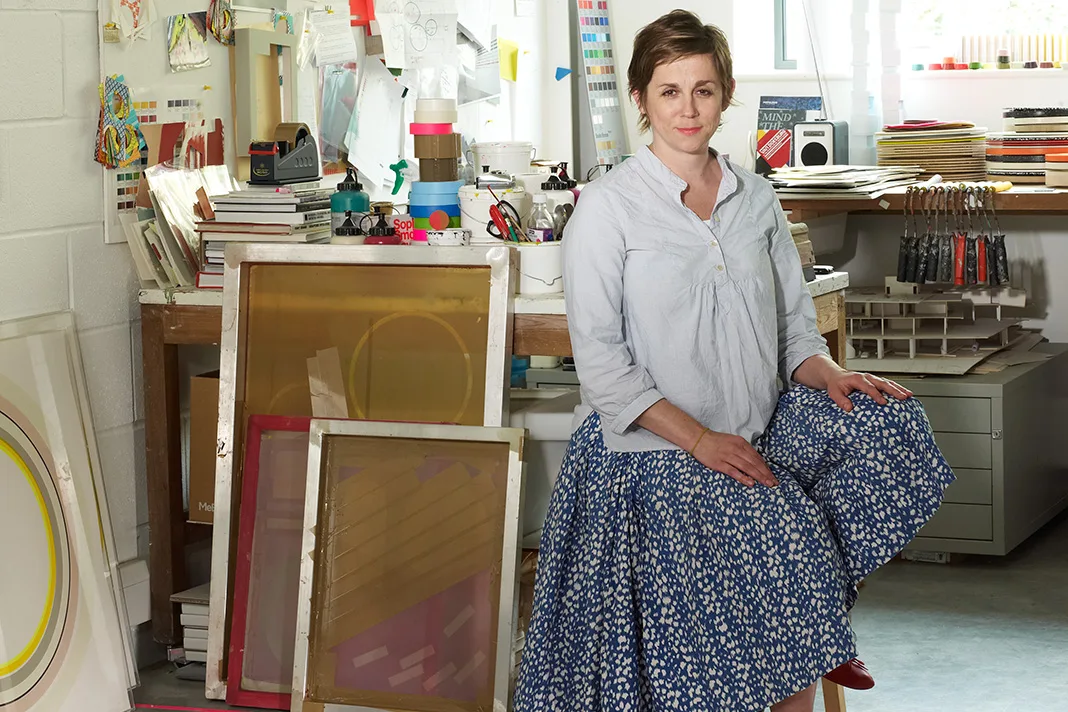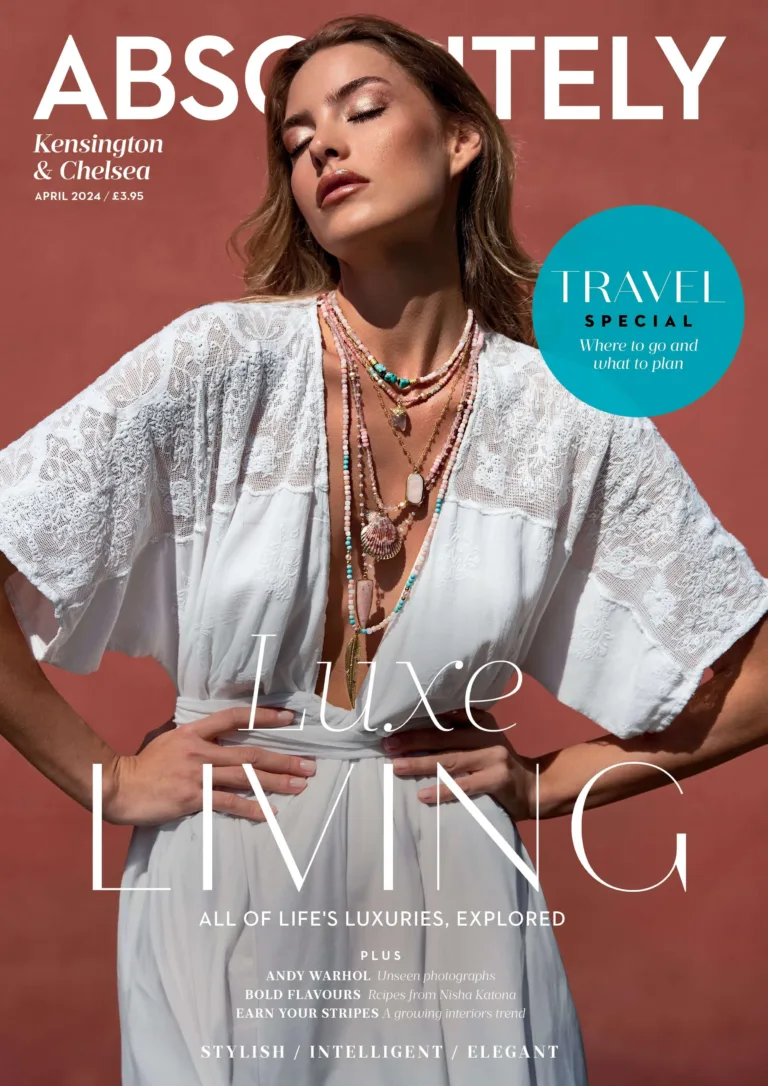Sophie Smallhorn has works that span sculpture, screenprints and site-specific installations but she’s reluctant to call herself an artist. ABSOLUTELY visits her north London studio
Words Pendle Harte
Introducing Sophie Smallhorn…
Sophie Smallhorn’s work is all about colour. Her projects are diverse, ranging from small sculptural pieces to large architectural installations via screen prints and corporate commissions. It was Sophie who created the coloured panels for Stratford’s Olympic Stadium, the large-scale colour wraps that defined the building’s zones, which she worked on concurrently with the little 3d models that she loves best. Scale isn’t an issue for her; colour is.
Of course there has been no clear career path for this, and Smallhorn started work as a carpenter, ‘making furniture under slight duress’ – in retrospect, she says, the pieces she made ‘were actually overgrown pieces of sculpture with a bit of function thrown in’ and not actual pieces of furniture at all really. ‘Bloody hideous, they were – pieces that involved colour and I added some plastic parts.’ She was never interested in making furniture, but she was interested in the technical aspects of working with wood. Her degree was ‘like an extended foundation course’, a course at Brighton that no longer exists called Wood, Metal, Plastics and Ceramics, which allowed her to experiment with everything, so it was only in her final year that she specialized, majoring in wood and minoring in plastics. Alongside the reluctant furniture she started making ‘small funny pieces of offcuts’ where she’d experiment with stains. ‘They were just sort of pieces and nobody took much notice of them but I guess they were sort of sculptural pieces – when I left college that was where my interest was.’ Was she calling them anything? ‘No, because I didn’t know what they were really.’Clearly there’s a lack of available vocabulary to describe what she does. And the semantics continue with a debate about whether she’s an artist or a designer – she’s reluctant to label herself as either. ‘Essentially I had done a design degree so I wouldn’t have had the confidence to call my pieces art or sculpture,’ but when antiques dealer Adam Bray spotted them and wanted to make a show of her ‘funny offcut pieces’, they became somehow legitimized. By that stage they weren’t stained but painted wood and had evolved into geometric colour studies designed to be hung on the wall. From that first show, Smallhorn found a dealer. ‘It was him saying, okay, I’m a fine art dealer and this is art that made it all begin.’ They still don’t really have a name but the small 3d pieces are arrangements in colour. ‘They’re purely intuitive, not rooted in any sort of method or system; they are about proportion and spaces between and the negative space between elements,’ she explains.
And everything else has followed from there. ‘As I’ve gone on they have grown in scale largely because of the opportunities I’ve been given, so a corporate space might allow you to do something site specific for a foyer. So my work is split into domestic scale and larger site-specific pieces. Because my training is basically design training and I apply a very design-led process to the way I work, it’s enabled me to keep a foot in both camps.’ Whereas a traditional artist might demand complete creative freedom, Sophie actively enjoys working with the constraints that come from working to briefs and budgets. ‘Even if I’m working on something for myself I normally set restraints in my head. Like I’m not allowed to use any red or something. Otherwise the open-endedness is terrifying.’
Sophie Smallhorn on big-scale projects
Much of her commissioned work comes through architects and her work on the Olympic Stadium was a huge project, taking four years and involving complicated politics and technical challenges. Her brief was to address the building with colour, which sounds like a world away from making small models in a studio – it’s hard to imagine how her skills transfer. But for her it’s not so different. ‘I literally broke it down into small components and made lots of models. I work in a low-tech way anyway so I’d go to them with funny collaged mockups. It was amazing to be part of that.’ Again, her design background came into the fore. ‘When I’ve been offered opportunities to work on very large projects, full of compromises and constrains and briefs, I’m happy to take that on when a pure artist might not be.’
From this work with colour, it’s a natural progression to screen printing, she says, because it’s ‘another vehicle to play with colour. You can achieve hard-edged graphic structural compositions.’ With screenprinting you can print two colours and create three with the overlay. ‘I love printing with four colours and creating eight,’ she says. Her next project is an exhibition featuring 100 prints made in 100 days as part of the Shoreditch Design Triangle. Her work is very popular with Swiss collectors, she says. ‘They love a straight line. I’m not a tidy person but the work is very organized and contained,’ she laughs.Sophie Smallhorn
During London Design Festival and as part of Shoreditch Design Triangle Sophie Smallhorn will be showing ‘100 Prints’, an exhibition of one hundred one-off 400 x 400mm screen prints. The exhibition will run daily from 16 to 24 September; 10am – 4pm at Tea Building, 56 Shoreditch High Street, E1 6JJ







